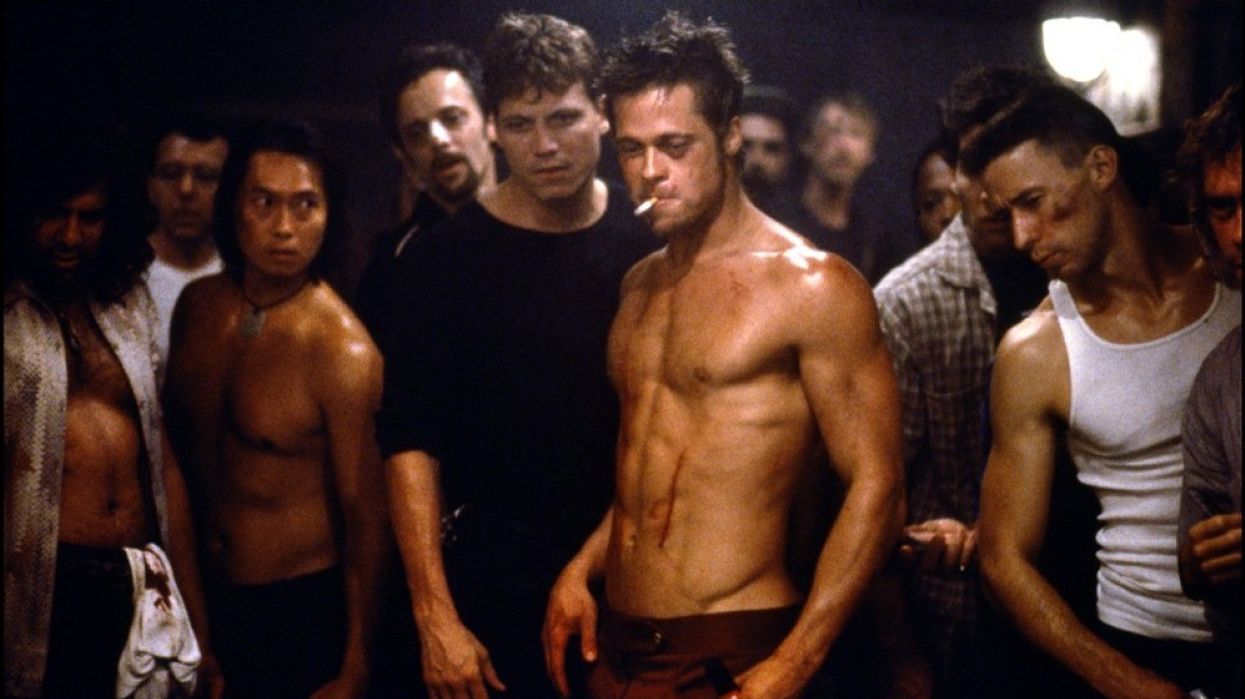Watch: 'Fight Club' Demonstrates the Visceral Power of Sound Design
The first rule of sound design? You don't notice sound design.

David Fincher is known for his strength in visual storytelling. Whether it's Se7en, Zodiac, or The Social Network, his dark, frenetic imagery sets the tone for the entire film. There is perhaps no better example of this strength than Fincher's 1999 cult classic, Fight Club.
There's one key aspect of production, however, that you may have lost within the psychotic swirl of Fincher's direction. But that may be because you were never supposed to notice it in the first place. As Film Radar put it in their latest video essay, "visuals are meant to stand out, but sound is different. By design, you’re not meant to notice sound, because good sound design is meant to be paired so perfectly with the visuals that the audience shouldn’t notice." Good sound is what makes Fight Club such a brutal, unique, action film—and after watching the essay below, we have to agree.
Sound design can truly make or break a film. If you don't have good sound on your production, then it's not going to be taken seriously. (We've all seen it happen. It's not pretty.) Going beyond basic sound capture, however, is what makes Fight Club so effective.
Designers Ren Klyce and Richard Hymns used their mastery of the art to its fullest potential, adding an extra depth of realism to the film which increased the power of those fight scenes on an already captive audience. In Klyce's words, “similar to what a cinematographer would do in terms of the photography and images, the sound designer's job is to create the same environment you see with your eyes, but with your ears.”
As the video illustrates, the fight scenes in Fight Club are a perfect example of how sound can support realism in a film. Most action movie's fight scenes involve those cheesy stock punch sounds, but Fight Club is something entirely different. So how did they pull off those ultra-real foley punches?
"We started off by pulling the punches off the CD sound effects libraries that have been used in every movie, but it just didn't feel real," Klyce recalls. "For traditional foley punches, you take a sham, wrap it around celery for a bone crack, and snap it over a pit. So we started off with those sounds. But the images that were coming in were very gory, so then we thought, 'Well, let's take carcasses of chickens and hit those.' But it didn’t quite work. So then we thought, 'Okay, let's put walnuts inside of the chickens, mic that, and crunch those.' We layered these meat punches and the walnuts with the traditional punches, and then offset them and EQ’d some of the brightness down. We got into kind of a strange territory of sound."
Foley artists and sound designers are truly the unsung heroes of the industry—mostly because you’re not supposed to notice their work in the first place.
Source: Film Radar











